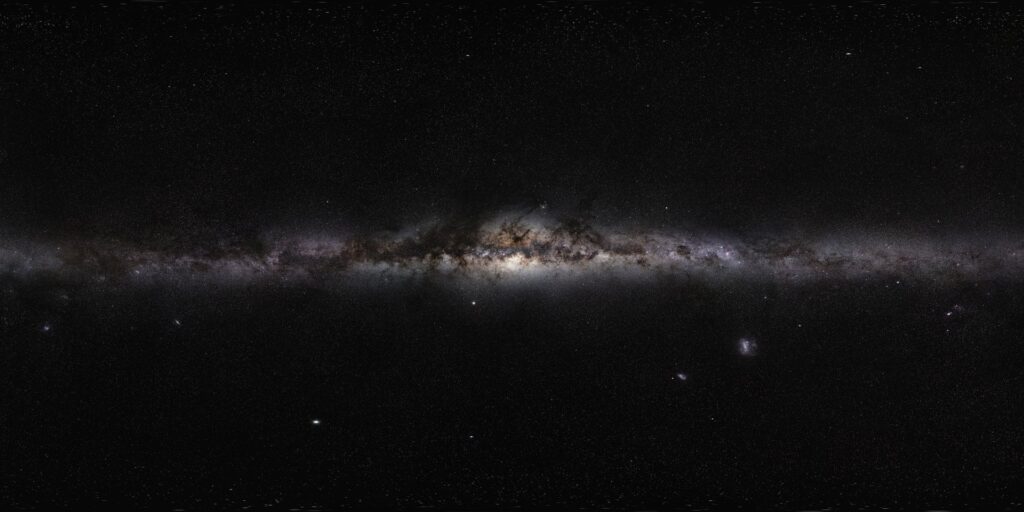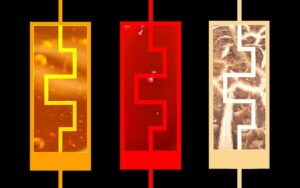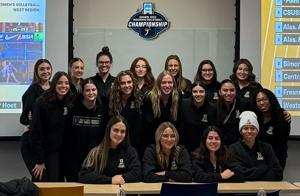
Researchers at the RIKEN Center for Interdisciplinary Theoretical and Mathematical Sciences (iTHEMS) in Japan, in collaboration with the University of Tokyo and the Universitat de Barcelona, have achieved a groundbreaking milestone in astrophysics. They have created the world’s first hyper-realistic simulation of the Milky Way, accurately modeling over 100 billion stars over a span of 10,000 years. This simulation not only represents a significant leap in the number of individual stars compared to previous models, but it also operates at a speed that is 100 times faster.
The innovative simulation was made possible by harnessing the power of 7 million CPU cores, advanced machine learning algorithms, and complex numerical simulations. This advancement offers astronomers a powerful tool to study stellar and galactic evolution at an unprecedented scale, providing new insights into the formation and dynamics of our galaxy. The findings were detailed in a paper titled “The First Star-by-star N-body/Hydrodynamics Simulation of Our Galaxy Coupling with a Surrogate Model,” published in the *Proceedings of the International Conference for High Performance Computing, Networking, Storage and Analysis* (SC ’25).
Advancements in Galactic Modeling
Simulations that can capture the dynamics of individual stars play a crucial role in testing theories related to galactic formation, structure, and evolution. Traditionally, astronomers have struggled with creating simulations that encompass the full complexity of the forces at play in galactic systems, including gravity, fluid dynamics, supernovae, element synthesis, and the influence of supermassive black holes (SMBHs). These processes operate on various scales, complicating the modeling efforts.
Historically, the mass limit for simulations has been approximately one billion solar masses, representing less than 1% of the total stars in the Milky Way. Current state-of-the-art supercomputers require around 315 hours (over 13 days) to simulate just 1 million years of galactic evolution, which is merely 0.00007% of the Milky Way’s estimated age of 13.61 billion years. Consequently, astronomers have been limited to modeling only large-scale events, as simply adding more processing cores does not solve underlying computational and efficiency issues.
To overcome these challenges, the research team, led by Hirashima, integrated a machine learning surrogate model that significantly reduced the computational resources needed. This model was trained on high-resolution simulations of supernovae, enabling it to predict the impact of these cosmic explosions on surrounding gas and dust over a timeframe of 100,000 yearsBreakthrough Results and Future Implications
The team validated their simulation approach through extensive testing on the Fugaku and Miyabi Supercomputer Systems at the RIKEN Center for Computational Science and the University of Tokyo, respectively. Their results indicated that their innovative method could simulate the resolution of stars in galaxies exceeding 100 billion stars, achieving simulations of 1 million years of evolution in just 2.78 hours. At this pace, it would take only 115 days to simulate a full 1 billion years of galactic history. This development not only equips astronomers with a vital resource for testing theories regarding galactic evolution but also showcases the potential of surrogate AI models to enhance advanced simulations across various scientific fields. Beyond astrophysics, this “AI shortcut” could facilitate complex simulations in other domains such as meteorology, ocean dynamics, and climate science, ultimately broadening the horizons for research and understanding of intricate systems. In conclusion, the collaborative efforts of the researchers from RIKEN, the University of Tokyo, and Universitat de Barcelona represent a significant advancement in our ability to explore and understand the Milky Way. As technology continues to evolve, the implications of such innovations will likely extend far beyond astrophysics, impacting various scientific disciplines for years to come.







